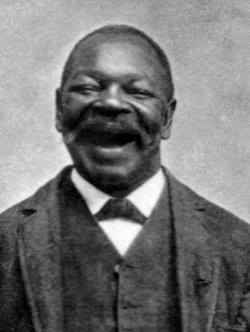GM – FBF – Black Music Month was initiated by President Jimmy Carter who, on June 7, 1979, decreed that June would be the month of black music. So today I will tell you the story of the first black man to be recorded in America. I know that some of you never knew this. Make it a champion day!
Remember – In his 2016 proclamation, President Obama noted that African-American music and musicians have helped the country “to dance, to express our faith through song, to march against injustice, and to defend our country’s enduring promise of freedom and opportunity for all.”
Today in our History – June 9, 1891 – George Washington Johnson, sings for Thomas A. Edison in his West Orange, N.J. laboratory.
Johnson was born in Virginia, either in Fluvanna County or near Wheatland in Loudoun County. His father may have been a slave; if so, he was likely freed in 1853. From an early age, Johnson was raised near Wheatland as the companion and servant of a prosperous white farmer’s son. During his time with this family, he developed his musical ability and even learned to read and write, which was unusual for a black child in Virginia before the American Civil War. Johnson later worked as a laborer, and in his late twenties he moved to New York City. By the late 1870s he was making his living as a street entertainer in New York, specializing in whistling popular tunes.
Some time between January and May 1890, Johnson was recruited by two different regional phonograph distributors who were looking for recording artists for their coin-operated machines. Charles Marshall of the New York Phonograph Company and Victor Emerson of the New Jersey Phonograph Company both heard Johnson performing in Manhattan, probably at the ferry terminals on the Hudson River. Both of them invited Johnson to record his loud raggy whistling on wax phonograph cylinders for a fee of twenty cents per two-minute performance. Although Johnson could whistle all the tunes of the day, one of his first recordings for both companies was a popular vaudeville novelty song called “The Whistling Coon”. Johnson sang as well as whistled, and also was able to give a boisterous laugh in musical pitch. From this he developed the second performance that made him famous, “The Laughing Song”. Although he recorded other material, including whistling the song “Listen to the Mockingbird” and some short minstrel show performances done with other performers, it was these two songs that Johnson would perform and record over and over for years.
In the earliest days of the recording industry, every record was a “master”. A singer with a strong voice could make three or four usable recordings at once, with as many machines running simultaneously with their recording horns pointed towards the singer’s mouth. Johnson would sometimes sing the same song over and over again in the recording studio fifty or more times a day.
By 1895, Johnson’s two tunes “The Whistling Coon” and “The Laughing Song” were the best-selling recordings in the United States. The total sales of his wax cylinders between 1890 and 1895 have been estimated at 25,000 to 50,000, each one recorded individually by Johnson. Remarkably, the New Jersey record company marketed Johnson as a black man, during an era when much of American life was strongly segregated by race. “The Whistling Coon” was characterized by a light-hearted tune and lyrics which would be unacceptable today, in which a Black man is compared to a baboon.
Johnson continued recording for the New York and New Jersey companies, and in 1891 also started recording for their parent company, the North American Phonograph Company. On June 9, 1891, Johnson traveled to sing for a few recording sessions held at Thomas Edison’s laboratory in West Orange, New Jersey. Johnson also made appearances on Vaudeville. His repertory on stage was pretty much limited to his two famous songs, but this was sufficient to get him bookings on bills.
In 1894, Johnson began recording with Len Spencer, a Vaudeville star of the era, and the two would remain friends until the end of Johnson’s life. In 1895, Johnson made his first recordings on the new disc technology for Berliner Gramophone. In addition to Berliner, Johnson recorded for Edison Records, Columbia, the Victor Talking Machine Company, the Chicago Talking Machine Company, Bettini and numerous other small cylinder and disc companies through the 1890s and up to 1909 or 1910.
In 1897, Johnson recorded two new songs, “The Laughing Coon” and “The Whistling Girl”. They remained in the Edison and Columbia catalogs for years, although neither was as popular as his two original tunes.By 1905, Johnson’s popularity had declined. New recording technology enabled the pressing of thousands of duplicate records from a single master, and Johnson was no longer needed to record each copy individually. His friend Len Spencer, now a successful artist and booking agent, hired Johnson as an office doorman. Johnson worked for Spencer and lived in his office building for several years, then moved back to Harlem. In 1914, at the age of 67, George W. Johnson died from pneumonia and myocarditis. He was buried in an unmarked grave in Maple Grove Cemetery in Kew Gardens, Queens, New York. Research more about the early black singers who were recorded in America and share with your babies. Make it a champion day!

